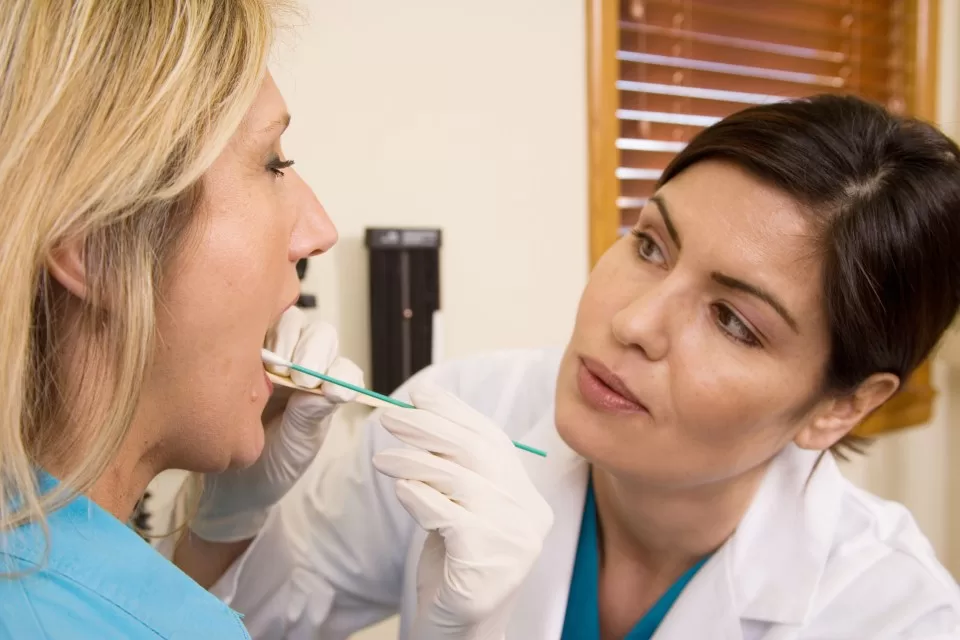HOW long someone has left to live can be calculated by taking a simple mouth swab, according to a new study.
Scientists say a “cheeky” discovery allows then to estimate a patient’s risk of dying using cells found in the mouth.
People age at different rates, but several lifestyle factors – including stress, smoking, alcohol, poor sleep, and poor diet – are known to speed up the process.
Since such environmental effects get “imprinted” on our genome in the form of epigenetic marks, scientists say it is possible to quantify molecular ageing by characterising the epigenome at certain sites.
Over the past decade, scientists have developed several such “epigenetic clocks” calibrated against chronological age and lifestyle factors across large numbers of people.
Most of them focused on DNA methylation in blood cells, which makes collection of samples difficult, as well as stressful for the patient.
Now, American scientists have developed a “second-generation” clock, called CheekAge, which is based on methylation data in easy-to-collect cells from inside the cheeks.
CheekAge can accurately predict the risk of mortality – even if epigenetic data from another tissue is used, according to the study published in the journal Frontiers in Aging.
Study first author Dr Maxim Shokhirev said: “We also demonstrate that specific methylation sites are especially important for this correlation, revealing potential links between specific genes and processes and human mortality captured by our clock.”
He explained that CheekAge had been developed or ‘trained’ by correlating the fraction of methylation at around 200,000 sites with an overall score for health and lifestyle, reflecting presumed differences in physiological ageing.
Dr Maxim and his colleagues used statistical programming to see how well it predicted death from any cause among 1,513 men and women, born in 1921 and 1936 and followed throughout life by the Lothian Birth Cohorts (LBC) programme of the University of Edinburgh.
One of the LBC’s aims was to link differences in cognitive ageing to lifestyle and psycho-social factors and biomedical, genetic, epigenetic, and brain imaging data.
Every three years, the volunteers had their methylome in blood cells measured at around 450,000 DNA methylation sites.
The last available methylation time point was used to calculate CheekAge and its association with the risk of dying.
Data on mortality had been obtained from the Scottish National Health Service Central Register.
Dr Maxim, head of computational biology and data science at the company Tally Health in New York, said: “CheekAge is significantly associated with mortality in a longitudinal dataset and outcompetes first-generation clocks trained in datasets containing blood data.”
He said for every increase by a single standard deviation in CheekAge, the hazard ratio of all-cause mortality increased by 21 per cent – meaning that CheekAge is “strongly associated” with they risk of dying in older adults.
Dr Maxim added: “The fact that our epigenetic clock trained on cheek cells predicts mortality when measuring the methylome in blood cells suggests there are common mortality signals across tissues.
“This implies that a simple, non-invasive cheek swab can be a valuable alternative for studying and tracking the biology of ageing.”
The researchers looked at those methylation sites which were most strongly associated with mortality in greater detail.
Cheek age could predict ‘healthy lifespan’
Genes located around or near those sites are potential candidates for impacting lifespan or the risk of age-related disease.
For example, the gene PDZRN4, a possible tumour suppressor, and ALPK2, a gene implicated in cancer and heart health in animal models.
Other genes that stood out had previously been implicated in the development of cancer, osteoporosis, inflammation, and metabolic syndrome.
Dr Adiv Johnson, head of scientific affairs and Education at Tally Health, said: “It would be intriguing to determine if genes like ALPK2 impact lifespan or health in animal models.”
He added: “Future studies are also needed to identify what other associations besides all-cause mortality can be captured with CheekAge.
“For example, other possible associations might include the incidence of various age-related diseases or the duration of ‘healthspan’ – the period of healthy life free of age-related chronic disease and disability.”
Longevity tips from the Blue Zones
The Blue Zones are five regions across the world where people regularly live to the ripe old age of 100, largely thanks to their diets and daily habits.
The term was coined by author and National Geographic fellow Dan Buettner, who made a name for himself studying the world’s longest living people.
The Blue Zones include Okinawa in Japan, the Nicoya Peninsula in Costa Rica, Ikaria in Greece, Sardinia in Italy and Loma Linda in California.
According to Dan, inhabitants of these swear by nine lifestyle tips.
Dubbed the ‘Power 9’, the longevity guru argued that they can provide “instructions and clues for how we can set up our lives to live longer”.
They include:
- Moving naturally rather than going to the gym
- Having a purpose in iife
- Keeping stress to minimum with naps and happy hours
- Stopping eating before you’re full
- Eating mostly plants
- Drink no more than two glasses of wine a day and never bingeing
- Belonging to a community, faith-based or not
- Putting your loved ones first
- Keeping a social circle that supports healthy behaviours
Read more on the Power 9 tips here.

